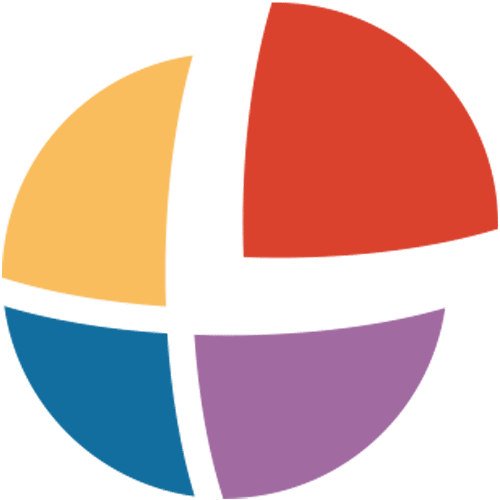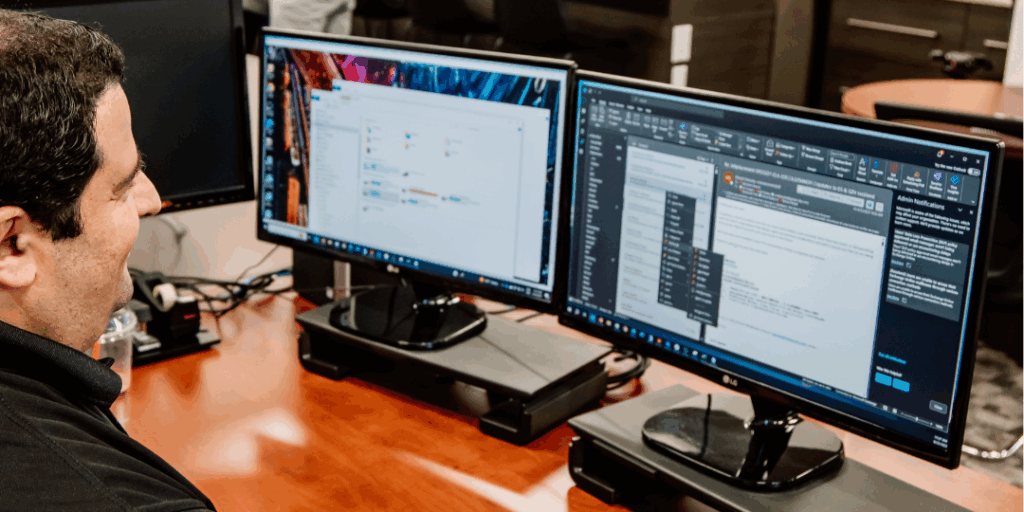
Learn eLearning Localization best practices for localizing eLearning courses and practical strategies for the eLearning translation process (for eLearning specialists, project managers, instructional designers, and other professionals).
Seeking eLearning translation solutions but are unsure where to begin? Have you been tasked with translating eLearning courses for a multilingual audience?
In today’s interconnected world, eLearning has revolutionized how we acquire knowledge and skills. However, to unlock its potential and connect with a diverse audience, eLearning courses must be effectively translated and localized. Throughout the article, we will delve into eLearning localization, highlight its benefits, address common challenges, offer tips for file preparation, outline the components that may require translation, and present diverse translation solutions tailored to different types of eLearning courses.
Topics covered in this article:
- What is eLearning Localization?
- Benefits of eLearning Localization
- Why Invest in eLearning Localization?
- Localizing Common eLearning Platforms
- Challenges of eLearning Localization
- How to Prep eLearning Files for Translation
- Components That May Need to Be Translated for eLearning Courses
- Translation Solutions for Different Types of eLearning Courses
What is eLearning Localization?
eLearning localization is the process of adapting educational courses to meet the linguistic, cultural, and contextual requirements of diverse target audiences. This comprehensive process involves not only translating text but also adapting voiceover narrations, videos, documents, assessments, and user interfaces to ensure they are culturally relevant and appropriate. By localizing eLearning content, organizations can significantly enhance learner engagement, comprehension, and overall learning outcomes, providing a more effective and inclusive educational experience for learners from different cultural backgrounds.
The Benefits of eLearning Localization
eLearning localization benefits organizations aiming to expand their reach and cater to multilingual audiences. We have an introduction to eLearning translation here, but generally speaking:
- Accessibility & Wider Audience Reach Localized eLearning courses are accessible on-demand, allowing learners to study at their own pace in their native language, thus reaching a global audience and accommodating diverse schedules. By making courses accessible in multiple languages, organizations can reach a wider audience and tap into new markets. This fosters inclusivity, enhances engagement during the course, and encourages knowledge retention after completion.
- Increased Learning Retention, Comprehension, and Engagement Learning in one’s native language through localized eLearning enhances information retention, comprehension, and engagement, leading to better completion rates and more consistent learning outcomes across an organization.
- Scalability & Cost Effectiveness Localized eLearning courses are a cost-effective solution for businesses, reducing the need for multiple language instructors and saving employee time, while also being scalable to accommodate any number of learners. eLearning translation opens doors to global markets, empowering organizations to reach new customers and boost their revenue streams.
Why Invest in eLearning Localization?
eLearning localization is not just a luxury. It’s a necessity for organizations aiming to expand their global reach. Localizing eLearning courses allows for effective communication and knowledge transfer and helps employees overcome language and cultural barriers.
Localization ensures that learners can fully engage with the content, understand complex concepts, and apply what they learn in real-world scenarios. By investing in eLearning localization, organizations demonstrate their commitment to providing meaningful and impactful learning experiences to a diverse learner base.
Why is localization a game-changer to successful translations? This article will help you gain some insights into the importance of localization efforts.
Localizing Common eLearning Platforms
Before getting into the details of content localization, it’s essential to be familiar with some popular eLearning platforms widely used for course development. Storyline, Rise, Captivate, and Vyond, offer powerful tools and functionalities for creating engaging and interactive eLearning content. Understanding the capabilities of these platforms will help you better strategize and plan for the translation and localization of courses.
Localization always involves adapting content to meet the linguistic and cultural needs of diverse learners. However, each eLearning platform will have it’s own nuances that your translation company should understand.
For example, translating a course on Moodle involves not only converting written material into the target language but also ensuring that all multimedia elements, such as videos and audio recordings, are culturally appropriate and accurately localized. This might involve recording new voiceovers with native speakers and adjusting visual elements to reflect the cultural context of the target audience.
Additionally, every eLearning platform will have a different user interface, navigation, and interactive elements. It’s important to make the content intuitive and familiar in every langugage, reducing cognitive load, and allowing learners to focus more on the content. By localizing these platforms, organizations can improve learner engagement, comprehension, and satisfaction, ultimately leading to better educational outcomes and a more inclusive learning environment.
Challenges of eLearning Localization
While eLearning localization offers numerous benefits, it is not without its challenges. Understanding these challenges will help you navigate the translation process more effectively:
1. Complicated Translation Process
The eLearning Translation Process can be one of the most complicated, with text, graphics, buttons, menus, supporting PDFs, narrations, voice overs, subtitles, dubbing, captions, assessments, quizzes, games, cultural adaptations… the list goes on and on. Finding experienced and skilled translators and localizers who understand the intricacies of e-learning content is just the beginning of the translation process.
2. Experienced translators and localizers
When translating and localizing an eLearning course, certain aspects might need to be reworked or adapted to suit the target audience. This can be daunting and require effort to overcome any resistance or concerns about starting from scratch.
We often recommend finding a translation agency that is ISO Certified with a proven project management process they can share with you.
3. Managing the sheer size of a project or course
Translating an individual file isn’t impossible. (We should know, we do it all the time.) But eLearning courses can be extensive and complex, requiring careful management of various components such as multimedia files, assessments, interactive elements, and more. A single video can have captions, on-screen text, voiceover, and several other components that may need to be translated. (And eLearning courses usually have multiple videos.) Dealing with the extensive scope of a project or course can be a significant challenge.
4. Preventing leaked content
In the process of eLearning localization, ensuring that confidential or copyrighted content does not get leaked or shared improperly becomes a crucial concern. Safeguarding the integrity and security of the content throughout the localization process is essential.
To address this, organizations should turn to experienced translators and localizers who possess the necessary expertise, safeguards, and cultural knowledge. These professionals ensure accurate and to prevent content leaks and maintain confidentiality.
If you’re worried about sensitive or confidential content, our process is to use an NDA. We also never recommend placing sensitive content into machine translation software such as ChatGPT.
5. Strategic Investment from Leadership
Organizations should view eLearning localization as a strategic investment that yields long-term benefits. However, deciding where to invest – which courses you’ll translate and the languages you’ll translate them into – is not easy.
We recommend starting with gathering data from your audience with a survey. Sometimes this is easier said than done, but working with a language expert can help you determine how to make the most out of your translation investment.
Partnering with the right translation team is crucial in other ways as well. You can consider different types of translation agencies depending on your translation needs. Some agencies offer more affordable machine translation but lack the localization quality that an eLearning translation needs to create successful learners.
Look for professionals who provide detailed quotes, have references who can speak to the professionals’ ability to deliver projects on time, and possess ISO certifications to guarantee quality and prevent costly errors. Investing in a reliable translation partner ensures a smooth and efficient translation process, saving time and resources.
6. Verification of Translation Quality
One of the challenges in eLearning translation is that it’s often difficult to assess is a project’s quality until the very end of the project. Espeically if you are producing
To mitigate this risk, work with a translation partner who provides a clear plan and regular updates throughout the translation process. This enables stakeholders to monitor the progress and quality of the translation, ensuring that any necessary adjustments are made promptly.
Many companies are opting to translate microlearning as a solution to address these challenges effectively. Microlearning refers to short, bite-sized learning modules focusing on specific and crucial topics. By first translating the most important microlearning content, organizations can assess translation quality and address any issues before tackling larger eLearning courses.
And now, let’s examine the intricacies of the eLearning translation workflow.
How to Prep eLearning Files for Translation
To streamline the translation process, eLearning files need prep work. Here are some best practices to consider:
1. Source Files: Instead of copying and pasting content into a Word document, best practice is to provide complete English source files that your translation team can edit. For an eLearning course, examples could include PowerPoint presentations, Premiere Pro video files, or InDesign files – instead of MP4 and PDF. It isn’t impossible to work with exported file types, but access to the source files allows translators to work more efficiently and maintain consistency across the translated content.
2. Planning and Research: Effective eLearning localization requires careful planning and execution. This includes researching the cultural norms, language usage, and instructional design preferences of the target audience. Understanding the target audience’s learning preferences and incorporating culturally-relevant examples and scenarios will enhance the effectiveness of the localized eLearning course.
Resources to help with research:
- What is Localization? [28 Practical Localization Tips, Examples, & FAQs]
- Translation Glossary vs Translation Style Guide: What’s the difference? Do you need them?
- 8 Tips for Writing with a Multilingual & Cross Cultural Audience in Mind
- How to Choose a Translation Company (Ultimate Guide + 4 Must-Haves)
3. Get an Accurate Quotation: This leads back to #1 (providing source files) but providing the detailed files is a crucial step for an accurate eLearning course translation quote. As we covered previously, they are a financial investment. Providing source files when getting a quote for translation services is essential to receive an accurate quotation from translation service providers. Quoting from output files alone (like MP4 or PDF files) can lead to an increased quote once the source files are received, confusion, delivery delays, and surprise costs.
(And because you’re providing these source files, that’s again why we recommend an NDA.)
Components That May Need to Be Translated for eLearning Courses
eLearning courses consist of various components that may require translation. Each component will undergo Translation, Revision, and Proofreading (TRP) to ensure accurate translations and localization quality. Understanding these components will help you better navigate the localization process. Some common components include:
- Text: Translating written content, including course scripts, instructional text, reading materials, assessments, and on-screen text.
- Multimedia Elements: Translating and recording solutions for multimedia elements may include audio narration, voice overs, video subtitles, dubbing, voice acting, and captions in the target languages necessary. Syncing the translated audio with the course content ensures a seamless learning experience.
- Visual Elements: Visual elements such as images, graphics, charts, diagrams, and icons need to be localized to align with the cultural context of the target audience. This may involve adapting visuals, replacing culturally-specific examples, or modifying user interactions to match the target audience’s preferences.
- Interactive Elements: Navigational menus, buttons, labels, tool tips, forms, simulations, games, drag-and-drop activities, and clickable diagrams.
- Videos: If the eLearning course includes videos, translating subtitles or captions is a common approach to make the content accessible to multilingual learners. Alternatively, voiceover translations can be used to provide a localized audio track.
- Documents: Document translation is usually an easier process, but it’s an important consideration that can be forgotten. Documents such as resource materials, user manuals, FAQs, job aids, work books, privacy policies, terms of use, legal disclaimers, and other supplementary materials should be translated alongside the eLearning course to provide comprehensive learning resources in their native language.
- Assessments: Quiz questions and answers, feedback and explanations, surveys, test instructions
- Technical Components: Such as software code and scripts, email confirmations, error messages, and system notifications
But components vary dependent on the eLearning platform – or if you need to translate a custom LMS. Be sure whatever your requirements, choose a translation company that can work with the file types you have.
Translation Solutions for Different Types of eLearning Courses
Different types of eLearning courses require tailored translation solutions to ensure effective localization. Here are some solutions for different types of eLearning courses:
- Subtitling, Captioning, or Voiceover: This is one of the more traditional video translation solutions. Adding translated subtitles and captions alongside the visuals or providing voiceover recordings in the target language and for videos only. It allow learners to read or hear the content in their preferred language while retaining the original message.
- Instructor-Led Training (ILT) or Virtual ILT (VILT): Specific to the learning and education industry, this newer newer video solution provides a faster turnaround time than traditional video translation. For instructor-led training or virtual training sessions, record the training in English with Google Meet, Teams, or Zoom. Then translating and localizing the recording can be an efficient, more affordable approach to video transaltion. Remote interpreting services can also provide real-time translation during webinars or virtual meetings.
- Video Overlay: A video overlay technique can be employed in cases where the course primarily consists of videos, and the eLearning course owner needs the video translation fast and more affordable than traditional translation. It’s very similar to ILT/VILT, except the original video does not have to be a recording of a presentation. The video can be authored on any platform. This involves superimposing a video of an interpreter translating the content over the video itself without translating any of the embedded content in the video.
- Cloud-Based Platforms with Custom Translation Services: Many popular eLearning platforms, such as YouTube, Rise, Udemy, Coursera, Kajabi, WordPress, and HubSpot, offer built-in translation services. While these platforms often provide automatic translation features, it is important to note that they may not fully address localization needs. While we encourage you to take advantage of these automatic translations if they work for you, we find the best outcome often involved combining custom translation services integrated within these platforms. This is the best way to ensure accurate and culturally appropriate translations.
- Custom Learning Management Systems (LMS Translation): If your organization uses a custom, home-grown Learning Management System (LMS), our experts are equipped to work directly with your platform. We can tailor translation services to fit the unique structure and functionality of your LMS, ensuring that all content and user interfaces are accurately and effectively localized.
Embracing eLearning localization as a strategic investment allows organizations to bridge linguistic and cultural gaps, paving the way for effective knowledge transfer and meaningful learning opportunities on a global scale. By understanding the challenges involved, adequately preparing files, considering essential components for translation, and selecting appropriate translation solutions, organizations can optimize learning outcomes and foster inclusive and impactful learning experiences.
Continue Learning about eLearning Translation and Localization:
Category: Localization
Tags: Guides
Service: eLearning Translation
Industry: Education, Learning and Development
Don't forget to share this post!
Stay Updated with Interpro
Subscribe to our newsletter for the latest updates and insights in translation and localization.






